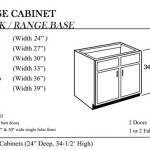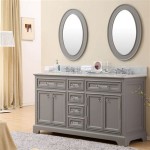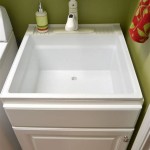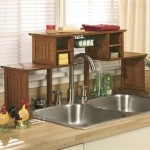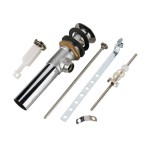Small Kitchen Window Over Sink Ideas
The window positioned above the kitchen sink is a common architectural feature, intended to provide natural light and ventilation while one performs tasks at the sink. In smaller kitchens, optimizing the design and functionality of this window is crucial. The goal is to maximize space, enhance aesthetics, and improve the overall usability of the kitchen. This article explores various ideas and considerations for designing a small kitchen window over the sink.
When planning the design, several factors should be considered, including the existing kitchen layout, the amount of natural light available, the homeowner's aesthetic preferences, and the budget. Each of these elements will inform the choices made regarding window style, materials, window treatments, and surrounding decor.
Window Style and Type
The type of window chosen significantly impacts both the functionality and the visual appeal of the kitchen. In small spaces, certain window styles are more suitable than others.
One popular option is the single-hung window. This style features a fixed upper sash and a lower sash that slides vertically. It is a cost-effective and practical choice, particularly in situations where exterior space is limited, as the sash does not swing outwards. The simplicity of the single-hung window lends itself to various kitchen designs, from traditional to contemporary.
Double-hung windows offer similar functionality to single-hung windows, but with the added benefit of both sashes being operable. This allows for better ventilation, as warm air can escape from the top while cooler air enters from the bottom. This increased airflow can be especially useful in a kitchen, where cooking often generates heat and odors. The ability to clean both the interior and exterior of the window from inside the kitchen is another advantage.
Another choice is the casement window, which is hinged on one side and swings outward. Casement windows provide excellent ventilation, as the entire window area can be opened to the outside. They also offer a clear, unobstructed view. However, in a small kitchen, the outward swing of the window may present a constraint, particularly if there are walkways or exterior features nearby. The hardware for casement windows may also require occasional adjustment to ensure a tight seal.
Awning windows are hinged at the top and swing outward from the bottom. This design allows for ventilation even during light rain, as the extended pane acts as a small awning. Awning windows are generally smaller in size, making them well-suited for installation over a sink in a compact kitchen. They are often installed in combination with other window styles for enhanced functionality.
For a more modern look, consider a sliding window. This type features one or more panels that slide horizontally. Sliding windows are easy to operate and provide a wide opening for ventilation. They are also relatively low-maintenance, requiring minimal cleaning and upkeep. However, the view may be partially obstructed when the window is open, depending on the configuration.
Fixed windows, also known as picture windows, do not open and are designed to provide a clear, unobstructed view. While they do not offer ventilation, fixed windows are an excellent way to maximize natural light in a small kitchen. They are often used in conjunction with other operable windows to balance light and airflow. A fixed window can also create a visually appealing focal point, especially if it overlooks a garden or other scenic area.
Enhancing Functionality and Aesthetics
Beyond the basic window style, there are several strategies to enhance the functionality and aesthetics of a small kitchen window over the sink.
Consider the windowsill. A wider windowsill can serve as a small shelf for storing frequently used items, such as dish soap, sponges, or small potted plants. This helps to keep the countertop clear and organized. The windowsill material should be durable and water-resistant, such as tile, stone, or treated wood. A tiled windowsill, in particular, is easy to clean and maintain.
Window treatments play a crucial role in controlling light, privacy, and aesthetics. In a small kitchen, it is important to choose window treatments that are both functional and space-saving. Avoid heavy drapes or curtains, which can overwhelm the space and block natural light. Instead, opt for lighter options such as roller shades, Roman shades, or Venetian blinds. These types of window treatments can be easily adjusted to control the amount of light entering the kitchen, while also providing privacy when needed.
Another option is to use sheer curtains or valances. These lightweight fabrics allow natural light to filter through while still providing a degree of privacy. Sheer curtains can also add a touch of softness and elegance to the kitchen decor. A valance is a short, decorative piece of fabric that is hung across the top of the window, concealing the hardware and adding a finished look.
For kitchens that require more privacy or light control, consider cellular shades, also known as honeycomb shades. These shades are made from a pleated fabric that forms a honeycomb-like structure. This design provides excellent insulation, helping to keep the kitchen cool in the summer and warm in the winter. Cellular shades can also be customized with blackout options for maximum light control.
The surrounding cabinetry and backsplash also influence the look of the window area. Light-colored cabinets and backsplash materials can help to reflect light and make the kitchen feel more spacious. A glass tile backsplash, for example, can add a touch of elegance and reflect light effectively. Incorporating under-cabinet lighting can also enhance the brightness of the sink area, particularly during evening hours.
Consider incorporating plants around the window. Small potted plants can add a touch of greenery and life to the kitchen. Herbs such as basil, mint, or parsley can be grown on the windowsill, providing fresh ingredients for cooking. Hanging plants can also be used to create a visually appealing focal point. Choose plants that thrive in humid environments and require minimal maintenance.
Material Selection and Maintenance
The choice of window materials is another important consideration. Common materials include wood, vinyl, aluminum, and fiberglass. Each material has its own advantages and disadvantages in terms of durability, cost, and maintenance.
Wood windows offer a classic and elegant look, but they require regular maintenance to prevent rot and decay. Wood windows should be painted or stained periodically to protect them from moisture. They are also generally more expensive than other options. However, wood windows can be customized with various finishes and designs, making them a versatile choice for different kitchen styles.
Vinyl windows are a popular choice due to their affordability, durability, and low maintenance requirements. Vinyl windows are resistant to moisture, rot, and insects, and they do not require painting or staining. They are also energy-efficient, helping to reduce heating and cooling costs. Vinyl windows are available in a wide range of colors and styles, making them a practical choice for many kitchens.
Aluminum windows are strong, lightweight, and corrosion-resistant. They are a good option for coastal areas or other environments with high humidity. Aluminum windows require minimal maintenance and are available in a variety of finishes. However, aluminum is a good conductor of heat, so aluminum windows may not be as energy-efficient as wood or vinyl windows.
Fiberglass windows are a premium option that offers excellent durability, energy efficiency, and low maintenance. Fiberglass windows are resistant to moisture, rot, and insects, and they can withstand extreme temperatures. They are also available in a variety of colors and styles. Fiberglass windows are generally more expensive than other options, but they offer long-lasting performance and value.
Proper maintenance of the kitchen window is essential to ensure its longevity and functionality. Regularly clean the window glass with a mild detergent and water to remove dirt and grime. Inspect the window frame and seals for any signs of damage or wear, and repair them as needed. Keep the windowsill clean and free of debris. By taking good care of the kitchen window, homeowners can enjoy its benefits for many years to come.
In conclusion, designing a small kitchen window over the sink requires careful consideration of various factors, including window style, functionality, aesthetics, and material selection. By choosing the right window type, incorporating space-saving features, and maintaining the window properly, homeowners can create a functional and visually appealing kitchen space.

Design Ideas For Kitchen Sink Windows Innotech Doors

You Ll Love These Creative Ways To Dress Up A Kitchen Window

Types Of Kitchen Windows Pella

Window Above Kitchen Sink Design Ideas

34 Kitchen Windows Over Sink Ideas For The Perfect View

10 Stunning Kitchen Window Ideas To Transform Your Home

Kitchen Window Ideas For Over The Sink Marvin Replacement

Bay Window Over Kitchen Sink Traditional Bridgeport By Bath Design Construction

Brighten Up With A Garden Window In Kitchen Spaces Improveit

Window Over Kitchen Sink Design Ideas

